China's local governments struggle with hidden debt
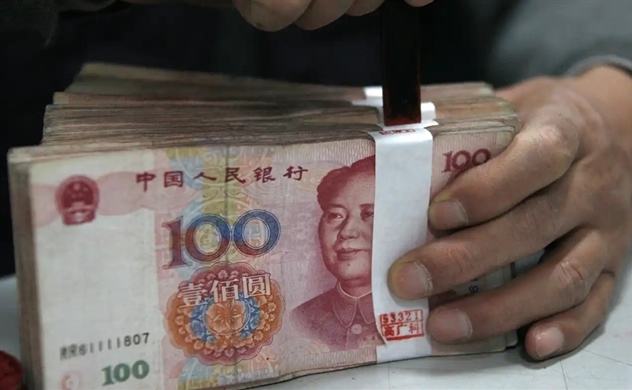
An employee seals a stack of yuan banknotes at a bank in Huaibei, Anhui province, China. Photo by Reuters.
Concern about the risks to the financial system and the sustainability of local government finances from trillions of yuan of invisible liabilities has stretched to the pinnacle of policymaking.
In its meeting on the economy on April 28, the Politburo, China's top decision-making body, called for strengthening local government debt management and strictly controlling increases in hidden debt.
Xi Jinping, China's president and head of the ruling Communist Party, highlighted preventing and defusing local government debt risks in an article published in February by Qiushi, the party's official journal. The article, titled "A few major issues in current economic work," was taken from Xi's speech at the annual Central Economic Work Conference in December, a key policymaking meeting, which called for greater efforts to deal with outstanding hidden debt.
"It's necessary to consolidate the responsibility of provincial-level governments to prevent and resolve hidden debts, increase efforts to dispose of outstanding hidden debts, optimize the maturity structure of debts, reduce the interest burden, steadily promote the unified supervision of local government hidden debt and on-the-books debt, and resolutely curb the increase of hidden debt," Xi said, adding that the governance of local government financing vehicles (LGFVs) should be strengthened "to help them transform."
Implicit guarantees
Xi's exhortations and a string of statements and comments from Finance Minister Liu Kun underscore the limited progress that has been made over the past decade to contain the financial liabilities of local authorities that are not explicitly reported in their official budgets.
The State Council defined hidden debt in 2018, describing it as any borrowing that is not part of on-budget government debt but carries an explicit or implicit guarantee of repayment using fiscal funds or is backed by illegal guarantees. It mainly includes bond issuance by LGFVs -- state-owned companies set up to finance local government investment such as building infrastructure, including highways and bridges. Debt is also hidden in public-private partnership projects, shady loan contracts and other channels used by local governments to raise money.
Under pressure to meet growth and investment targets, local authorities use these channels to raise money to pay for infrastructure and public welfare projects that they cannot fund entirely through on-budget spending because of controls on their official debt.
The main holders of LGFV bonds include banks and insurance companies, and banks are also major lenders to the vehicles. The government's concern is that any large-scale defaults could have a destabilizing impact on the banking sector and financial system.
There is no publicly available official data on the current scale of hidden debt, which was first revealed by the National Audit Office in a December 2013 report. The watchdog estimated that the total debt of local governments had surged to 17.9 trillion yuan ($2.9 trillion) by June that year, and much of it was hidden debt.
There has been no public update on that figure but many analysts, including those at the International Monetary Fund (IMF), have come up with their own estimates, which range from some 30 trillion yuan to more than 70 trillion yuan.
In its latest Article IV consultation report on China, the IMF estimated that at the end of 2022, explicit on-the-books debt of local governments, including bonds, was 35 trillion yuan. But implicit debt likely amounted to double that figure -- 70.4 trillion yuan, comprising 56.7 trillion yuan of LGFV debt that was "possible to be recognized as general government debt" and 13.7 trillion yuan of debt tied to government-guided funds (GGFs) and special construction funds (SCFs). In 2027, LGFV debt is forecast to almost double to 101.8 trillion yuan and GGF and SCF debt to rise to 22.8 trillion yuan.
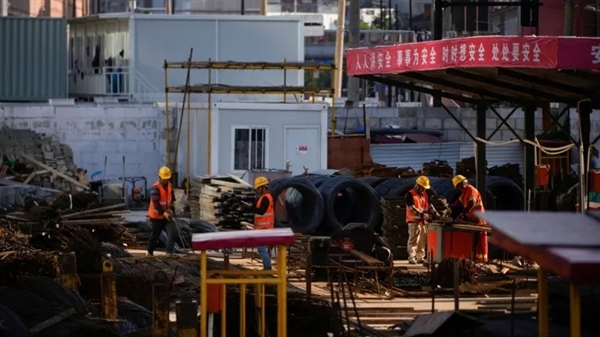 |
| Workers at a Shanghai construction site in 2022. Photo by Reuters. |
No responsibility
The inclusion of LGFV liabilities that may need to be recognized as government debt, and the GGF and SCF debt more than doubled China's overall government debt-to-gross domestic product ratio in 2022 from 51% to 110%, the IMF calculated.
China's Ministry of Finance disputes the IMF's assessment of government debt, saying that the amended Budget Law passed in 2014 made it clear that the liability for LGFV debt lies with the entity that issued it. "Local governments do not bear the responsibility to repay the debt of LGFVs and other state-owned enterprises since the implementation of the amended Budget Law in 2014, including the implicit debt illegally borrowed by LGFVs," the ministry said in its response to the report.
The ministry has repeatedly made it clear that local governments are responsible for their own debts and that the central government will not come to their rescue.
"If it's your baby, you own it. There will be no bailout from the central government," the ministry said in a letter dated August responding to a proposal to deal with hidden debt submitted by a member of China's top political advisory body.
Even so, LGFV bonds have been popular among investors because they are deemed to carry implicit guarantees that the local government backing them will step in to make repayments should the vehicle default. Local governments go to great lengths to prevent LGFV defaults, concerned that non-payment will sully their own creditworthiness and make it more expensive for them to issue their own bonds.
No LGFV has failed to repay a bond so far, although there have been defaults on non-standard debt, which usually refers to debt that is not traded on the interbank market or stock exchanges such as trust loans, acceptance bills and accounts receivable. From January 2018 to November 2021, more than 80 LGFVs in Guizhou, one of China's most indebted provinces, defaulted on non-standard debt, according to CSCI Pengyuan Credit Rating.
The government's warnings leave local officials on their own to deal with tens of trillions of yuan of on- and off-the books borrowings built up since the global financial crisis to fund investment and help them meet GDP growth targets.
Guizhou, one of China's poorest provinces, has been one of the most high-profile regions trying to deal with both its official and hidden debt.
In April, the provincial government signed an agreement with the State Council's State-owned Assets Supervision and Administration Commission, which said it would encourage companies directly owned by the central government to collaborate with Guizhou on areas including industrial development and reform of state-owned enterprises (SOEs).
A few days later, Guizhou signed an agreement with state-owned, bad-debt manager China Cinda Asset Management to deepen collaboration on promoting high-quality development. Cinda will set up a group of 50 financial experts to provide advice and help to the province, and establish a "comprehensive services mechanism" and specific programs, the Beijing-based company said in a statement. The focus of the services will be on serving the real economy, preventing and resolving risks, helping SOE reform, and shoring up the real estate sector, it said.
In a sign of how important tackling hidden debt has become, a growing number of provincial- and city-level governments highlighted the issue as one of their top priorities in their work reports to local legislatures earlier this year.
Information compiled by Tan Yiming, a fixed-income analyst at Minsheng Securities, shows that out of the Chinese mainland's 31 provincial-level regions, at least 18 included tasks related to hidden debt in their 2023 government or budget reports, up from 10 in 2022.
These reports rarely provide the nitty-gritty details of how the problem will be resolved, although some give a general outline.
Jiangsu province and Chongqing municipality have vowed to prevent new hidden debt by strengthening oversight of LGFVs, while the governments of Gansu and Henan provinces said they plan to set up evaluation mechanisms or improve accountability management systems to keep hidden debt and debt risks in check.
Henan and Guizhou are also among the provinces that pledged in their 2023 budget reports to strictly inspect and punish illegal debt-raising and fraudulent debt resolution.
More debt swaps
As the central government looks for ways to clean up local government hidden debt, speculation is growing that another debt swap program will be part of the solution.
In an interview with the state-run Xinhua News Agency published on Jan. 7, Guo Shuqing, head of the China Banking and Insurance Regulatory Commission, said one of the measures to deal with risks in the financial sector will involve allowing local governments to undertake debt swaps "in an orderly manner."
Some 4 trillion to 4.7 trillion yuan of local government hidden debt will need to be swapped in 2023, Citic Securities analysts led by chief economist Ming Ming estimated in a report published in February. The figures are based on the estimation that 9.2 trillion to 10.8 trillion yuan of LGFV debt will need to be repaid and swap bonds will be needed to deal with a chunk of it.
Some local authorities have already said they plan to issue "swap bonds," where debt is exchanged for local government bonds to bring off-balance-sheet borrowings onto their books.
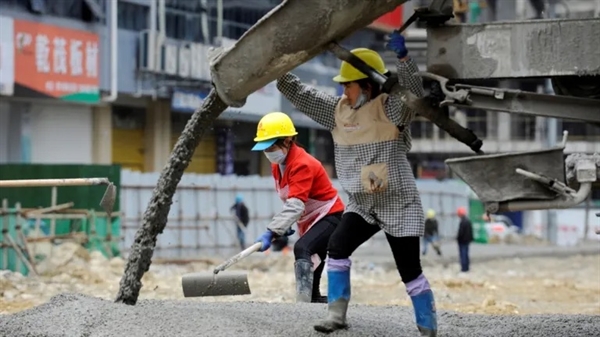 |
| Workers pour concrete at a site in Renhuai, Guizhou province, China in 2020. Photo by China Daily via Reuters. |
Guizhou is among the provinces proposing to swap its hidden debt with new government bonds, according to the budget report presented to the provincial legislature in January. The province's broader debt restructuring will be done in coordination with financial institutions and it will seek extensions to repayment periods and lower interest rates, the report said.
The program has already started. In December, Zunyi Road and Bridge Construction (Group), a financing vehicle in Guizhou, announced a debt restructuring agreement with 21 banks that involved delaying repayment on 15.6 billion yuan in borrowings by changing the term on all the loans to 20 years, and paying only interest on the loans for the next 10 years.
Swap bonds were first introduced in 2015 as part of a strategy to bring hidden debt out of the shadows and improve transparency over the scale of local government borrowings by bringing hidden liabilities into local budgets. Under a three-year program that officially ended in 2018, local authorities were allocated quotas to issue bonds whose proceeds could only be used to repay off-the-books loans of LGFVs or other state-linked entities which local governments could be liable for. Exchanging the old debt for government bonds meant the liabilities were transferred onto the balance sheets of local governments.
Under the program, a total of 12.2 trillion yuan of swap bonds were issued, according to the Citic Securities report.
The swap bond program was extended in 2019 in a pilot that allowed selected, mostly impoverished, county-level regions to deal with unresolved hidden debt through collaboration with financial institutions. The amount of swap bonds issued in 2019 reached almost 160 billion yuan, according to a February report by GF Securities.
In what some called the third round of swap bond issuance, three affluent provincial-level regions -- Shanghai, Beijing and Guangdong -- issued what are essentially swap bonds to clean up their hidden debt. These bonds showed up on local balance sheets as refinancing bonds, new debt issued by local governments usually to repay their on-budget maturing bonds. In this case, they have been used for bringing hidden debt onto the books. Meanwhile, the county-level swap pilot program has continued.
The amount of de facto debt-swap bonds issued between late 2020 and mid-2022 amounted to 1.17 trillion yuan, the GF report said.
Guangdong and Beijing have both announced the completion of their cleanups, although they did not provide details of the scale of the debt or how it was dealt with.
No provision for swap bonds was contained in the Ministry of Finance's 2023 budget report to the National People's Congress in March. But the government could dip into the existing unused quota for local government bonds, Li Qinghe, a fixed-income analyst at Huafu Securities, wrote in a February report.
Other debt management measures
Some local governments are exploring the establishment of a reserve fund specifically to repay debt in accordance with State Council guidelines issued in April 2021 related to deepening reform of the budget management system.
The guidelines did not explicitly specify whether the reserve fund system should be used for repaying hidden debt or on-budget debt.
No official documents on how the system would work have been publicly released, but a number of local governments, including Shanxi and Henan, have said in the past two years that they are working on such a system. Hubei province in central China said in 2022 that in general, a reserve fund should be no less than 5% of the outstanding balance of local government debt.
Tackling hidden debt does not only involve local governments taking over off-the-books liabilities and putting them onto their own balance sheets. It also involves them acting as coordinators and facilitators of LGFV debt restructuring with creditors, who are mainly banks and bond investors.
Guizhou province has been the most high-profile example so far, but other provinces have also said they are seeking help from financial institutions.
Liaoning, a rust belt province in northeast China, said it would, through collaboration with banks and companies, help cities and counties extend or restructure their high-interest or maturing hidden debt to defuse financial risks.
Source: Nikkei Asia
Same category news
-
Tsubasa Suruga
-
Kenya Akama - Fumika Sato
-
Cong Thanh
Latest news
-
Huyen Hoang

 TIẾNG VIỆT
TIẾNG VIỆT 




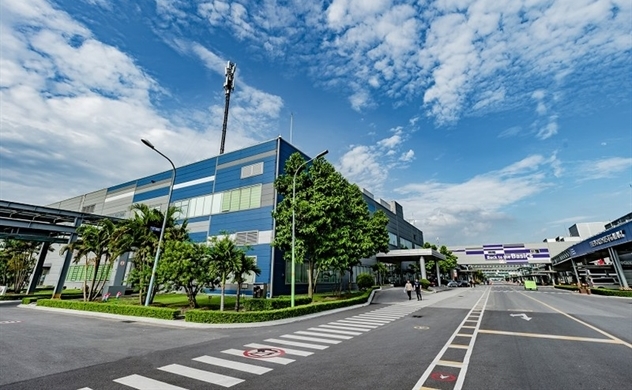


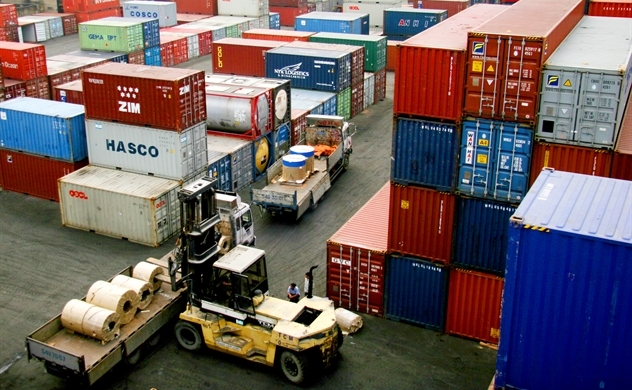
_291615658.jpg)









